Article - RareWine Academy
Vosne-Romanée, The Heart Of Burgundy, Offers Exclusivity, Power, And Towering Quality
The competitiveness in Burgundy is bombastic, and Vosne-Romanée is considered the very best appellation here. There are several reasons for this. Read more here.
The Big Five In Burgundy
Burgundy is home to some of the world's very best wine producers. Burgundy is magical. And Burgundy is complex. To get a better overview of Burgundy and the very best red wines from here, you need to zoom in. The entire Burgundy region measures 230 kilometres from Chablis in the north to Macon in the south. Focusing on the Cote d'Or – the golden slope – the size is reduced to 65 kilometres.
On the golden slope, the northern Cote de Nuits occupies 25 kilometres of the 230 kilometres, and these can be further reduced to a stretch of just 10 kilometres, where the best appellations are situated. Their location is perfect, even if the area is extremely minimal. Wines from here therefore come in very high quality and extremely limited quantities.
This series of articles focuses on the five main appellations: Gevrey-Chambertin, Morey-Saint-Denis, Chambolle-Musigny, Vougeot and Vosne-Romanée. Soil and exposure are highlighted, and the main Grand Cru and Premier Cru vineyards are highlighted.
Vosne-Romanée - The Best Of Burgundy
The competition is massive in the communes for red Burgundy, and it takes perfection to be at the top of the wine podium here. Of all the best communes, this article will highlight the greatness of Vosne-Romanée in particular, and why it stands above the other good Burgundy communes. The appellation covers two communes, which are mentioned here in the same article: Vosne-Romanée and the neighbouring commune Flagey-Echezeaux, both part of the Vosne-Romanée appellation.
Vosne-Romanée is the best appellation in Burgundy. Romanée-Conti leads the way as the best Grand Cru vineyard, and the Premier Cru vineyards also maintain a superb level. The legendary Cros Parantoux, made famous by Henri Jayer, is also located in Vosne-Romanée. Even on the 100 hectares of Village vineyards, interesting wines are produced.
Vosne-Romanée offers great producers, of which Domaine de la Romanée-Conti is at the top, closely followed by Liger-Belair, Leroy, Rouget and Cathiard, among others. New producers like young Charles Lachaux also enter the scene and keep up the level with a quite frugal winemaking rooted in new and old ideas, in both vineyard and cellar - strongly inspired by Madame Lalou Bize-Leroy.
The quality is exceptionally high in Vosne-Romanée, and there is nothing to indicate that the future looks any different.
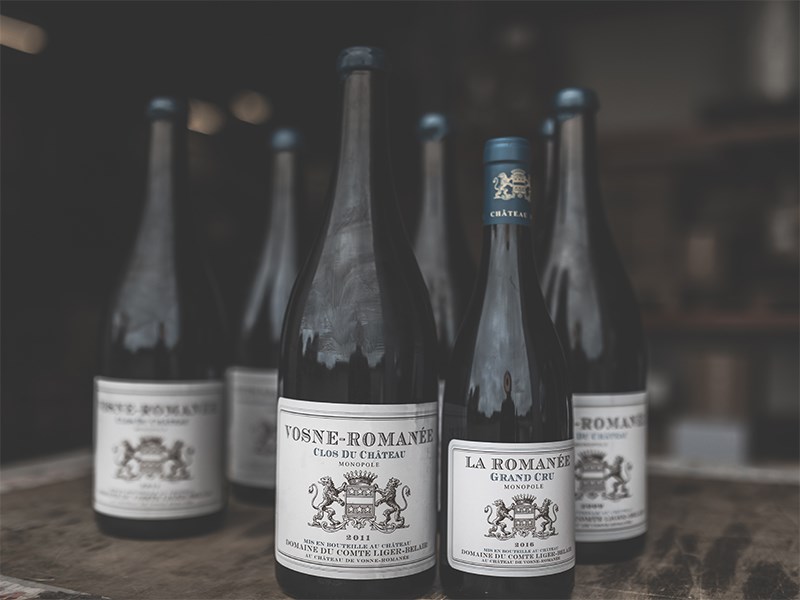 Liger-Belair La-Romanée
Liger-Belair La-Romanée
Soil And Exposure In Vosne-Romanée
The appellation is centred on two Grand Cru groupings. Echezeaux is located in the Flagey-Echezeaux commune bordering to Vougeot. Just north of the Vosne-Romanée town itself is the grouping around Romanée-Conti. The latter part extends down towards the commune of Nuits-Saint-Georges and the rows of Premier Cru vineyards. Around both centres of the Grand Cru vineyards are several Premier Cru vineyards, and further down the main road is a larger proportion of Village appellation vineyards. The last vineyards are below Nuits-Saint-Georges but maintain the charm of Vosne-Romanée in their wines.
Burgundy lovers will refer to Vosne-Romanée as the most exclusive commune. This despite the fact that there are fewer Grand Cru vineyards than in Gevrey-Chambertin and fewer hectares than in Corton.
It is only the experience of the wines as they go from bottle to glass that reinforces the mythical perception of Vosne-Romanée. These wines can achieve a balance of intensity and lightness, depth and airiness, juiciness, and heaviness - all without compromising quality.
Grand Cru In Vosne-Romanée
There are a total of six Grand Cru vineyards in Vosne-Romanée and two in Flagey-Echézeaux. Four of these have monopole status, which means that one producer owns the entire vineyard. This is a rarity with vineyards at this high level. In this case, the two most prominent are owned by Domaine de la Romanée-Conti and two other vineyards are owned by other single owners. Furthermore, there are Echézeaux and Grands Echézeaux, which are two parcels that together cover the majority of the Grand Cru area. In total, there are more than 70 hectares of Grand Cru classification in Vosne-Romanée, of which Echézeaux accounts for almost half.
Echézeaux
Echézeaux Grand Cru is located in the commune of Flagey-Echézeaux and covers almost 40 hectares. With that size, there is a natural variation in both style and quality of the wines that come from here, and the biggest variation is whether the grapes are grown up or down the slope. In total, the vineyard is divided into 11 lieu-dits, each with its own characteristics that define the style of each producer. It should be mentioned that the producer's skills and ambitions for his wine, rank higher than the specific location - which is not unusual in Burgundy.
The northernmost part of the Echezeaux vineyard is called En Orveaux and is adjacent to the part of Musigny called Combe d'Orveaux. En Orveaux is considered one of the absolute better parcels along with Echézeaux du Dessus, which is located just above Grands Echézeaux, along with Les Poulailleres, where also legendary Domaine de la Romanée-Conti has their share of the vineyard.
With its 40 hectares, Echézeaux is divided into almost 50 different ownerships. Several producers own parcels in different parts of the vineyard, from which they blend into one wine. Domaine de la Romanée-Conti is the largest landowner at Echezeaux with 4.67 hectares, and they are also recognised for producing the best wine from the vineyard.
There are of course many more exceptionally good producers at Echézeaux, and especially Emmanuel Rouget - with his share from his uncle Henri Jayer - is gaining great international recognition.
Grands Echézeaux
Grands Echézeaux are not physically bigger than Echézeaux, nor can it be definitively said that the wines are greater. However, there are some producers - including Aubert de Villaine of Domaine de la Romanée-Conti - who believe that their Grands Echézeaux have more depth of flavour. The vineyard is located between the Echézeaux and the best part of the Clos de Vougeot below.
In total, Grands Echézeaux measures 9.14 hectares, of which Domaine de la Romanée-Conti owns 3.53 hectares of the middle part. They also produce the finest wine from the vineyard, although other producers also manage to take advantage of the gift that Grands Ecéhzeaux gives: for example, Mongeard-Mugneret also produces a beautiful classically balanced wine from their 1.44 hectares.
La Romanée-Conti - The Epitome Of Burgundy And Ultimate Luxury
Romanée-Conti is the essence of ultimate luxury, mystery, and the epitome of Burgundy. It is the vineyard of every wine lover's dreams. It is the vineyard that delivers almost 5,000 bottles a year, which does nothing to quench the unquenchable thirst for La-Romanée-Conti. Few will feel a physical bottle, and even fewer will have the unique opportunity to taste it.
Domaine de la Romanée-Conti owns the whole vineyard, on 1.81 hectares, as a monopole, just as they do with La Tache Grand Cru. A bottle from Romanée-Conti in a new vintage costs on the other side of 30.000 Euro, and over the last few decades Romanée-Conti has ranked as the most expensive red wines in the world.
In 1723 a high cross was raised on the vineyard to honour the owner at that time. Today, the cross marks the location of the vineyard, but it has also become a world-famous symbol of the vineyard's astonishing status.
Romanée-Conti's place in the history books has been written since the first mentions in the 1580s. In all cases, Romanée-Conti has been referred to as the leading vineyard. Not only in Vosne-Romanée, but in the entire Burgundy.
At Romanée-Conti they managed to keep original vines until 1945, before they had to replant with American roots like the rest of Europe.
The last 1945 vintage produced only enough grapes for two barrels, which is equivalent to about 600 bottles. In 2018, two 1945 bottles were sold from a renowned cellar in Beaune, where they had been since they were acquired. The sale price was $558,000 per bottle, which is the most expensive bottle of wine ever sold.
The domain is a quality marker in itself. The open question becomes, how high the limit for a bottle of wine is? In this case there were several factors pulling the price up. A perfect provenance, which is paramount to achieving the highest price. The bottle was acquired young on the domain and transported only a few kilometres to a perfect cellar in Beaune. The fact that the wine was also from such a mythical vintage sent the price up to the heavens.
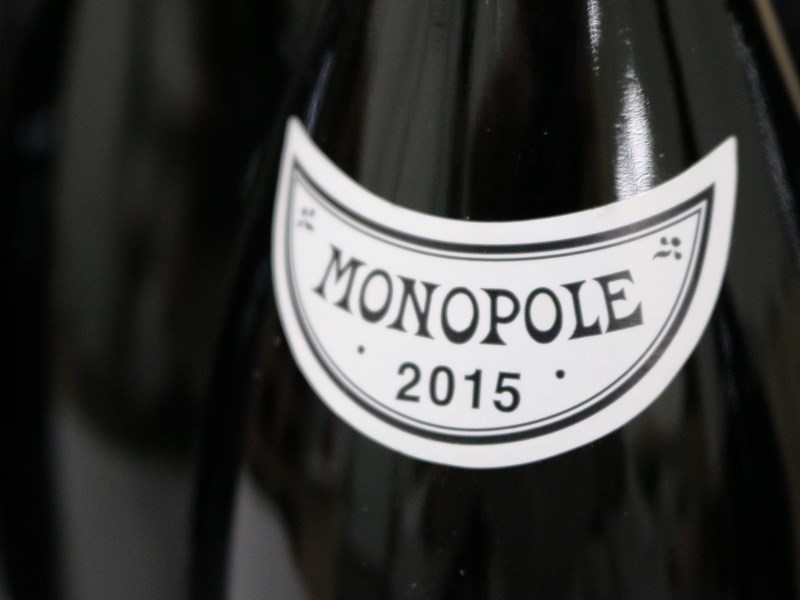
Romanée-Saint-Vivant
Romanée-Saint-Vivant is a vineyard with several owners, located below Romanée-Conti and Richebourg on the border of the village Vosne-Romanée. Wines from here are intense and the quality is undeniable, hence the increasing demand. Romanée-Saint-Vivant, with its multiple owners, has the ability to provide bottles for an in-depth tasting, tasting several wines from the same vineyard but from different producers. This gives a great understanding of the vineyard and confirms its towering level.
Here Domaine de la Romanée-Conti also dominates as the absolute largest landowner with 5.29 hectares out of 9.44 hectares. No other producer owns more than one hectare at Romanée-Saint-Vivant. The best other examples come from Domaine Leroy (0.99 hectares), but in recent years Arnoux-Lachaux has also delivered fine wines from here (0.35 hectares). However, top producers such as Hudelot-Noëllat, Dujac and Cathiard should also be highlighted for their ability to create excellent wines from Romanée-Saint-Vivant.
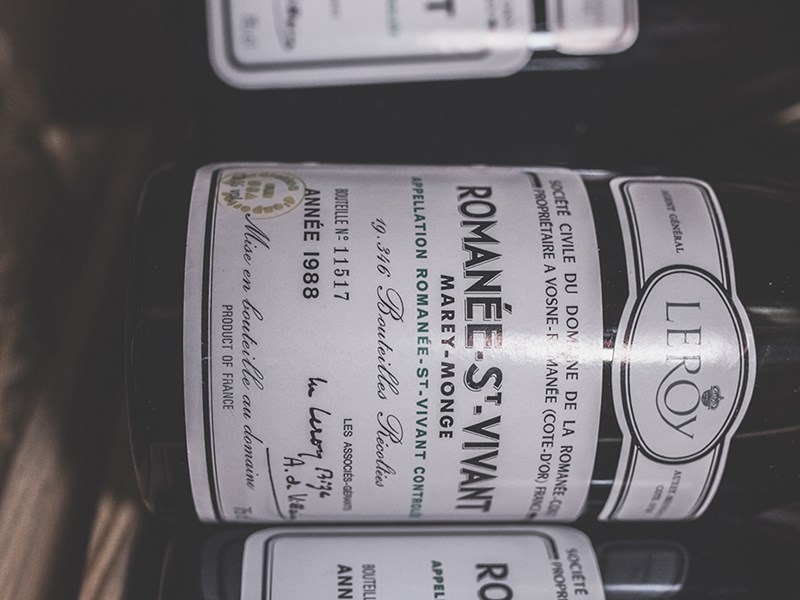
La Tâche
La Tâche is only a notch behind Romanée-Conti in reputation. It is a vineyard that delivers wines at a level far above the average for a good Grand Cru. La Tâche benefits from the same slope as Romanée-Conti, just a little further south in Vosne-Romanée. Here, La Tâche covers an area of 6.06 hectares, making it almost four times the size of Romanée-Conti.
The vineyard was first united in its present form in 1933, when Domaine de la Romanée-Conti acquired the three parcels that existed and brought them under one owner. La Tâche is situated as a single vineyard with a steep slope, creating a natural difference between the upper and lower parts of the vineyard. With one owner, a consistent cuvée can be blended each year. In recent years, some of the upper parcels have been replanted with selected clones from Domaine de la Romanée-Conti.
For the few who have had the opportunity to compare Romanée-Conti and La Tâche, the latter appears more elegant and airy with a little less complexity.
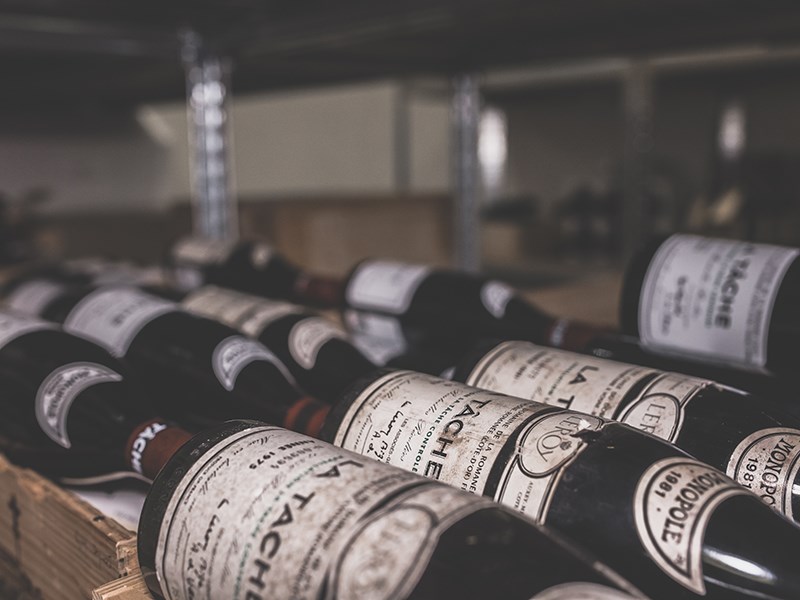
Richebourg
Richebourg is considered one of the best vineyards in the commune - second only to the famous monopole vineyards Romanée-Conti, La Tâche and La Romanée. Richebourg usually produces wines with great depth and a long life ahead of them. The complexity is supported by a good finesse, which is very typical of this famous commune.
Richebourg Grand Cru is divided between 11 owners, of which the smallest has only 0.07 hectares. It is Domaine du Clos Frantin. Their small parcel is at the northern end of the vineyard, adjacent to the Premier Cru Cros Parantoux.
The vineyard covers a total of 8.03 hectares and is divided into two parts, Les Verroilles at the northern end and Les Richebourgs at the southern end. Les Veroilles is slightly higher and therefore cooler, which in turn means later ripening of the grapes. The grapes from here will therefore usually be harvested a few days later, when they are optimally ripe.
Domaine de la Romanée-Conti is the largest landowner at Richebourg with its 3.51 hectares. This is spread over three parcels, which allows a complex wine to be produced with character from the whole vineyard. Next comes Domaine Leroy, which has a parcel of 0.78 hectares located between two Domaine de la Romanée-Conti parcels.
La Grande Rue
La Grande Rue is a narrow vineyard. Driving south from Romanée-Conti, La Grande Rue stretches like an isthmus from the village of Vosne-Romanée up to the summit of La Romanée on the other side of the road. La Grande Rue is a strip of land that is never more than 50 metres wide and is almost part of La Tâche. La Grande Rue was first classified as a Grand Cru from the 1991 harvest.
1.65 hectares is the size, and it is owned as a monopole by Domaine Lamarche. The quality is not quite up to par with its famous neighbours, but the potential is certainly latent. In recent years, Lamarche has made several improvements to both the vineyard and cellar, so hopes for future vintages are high.
La Romanée
La Romanée is the smallest Grand Cru in Burgundy with 0.85 hectares, all of which are owned by Comte Liger-Belair as a monopole. The land is just above Romanée-Conti, so it is interesting to conjecture how much of the difference in style and taste is to be attributed to the producer and the specific terroir here.
Since 2005 the land has been owned, cultivated and the wine produced by Liger-Belair. Before that, the grapes were grown by Domaine Forey, which sold the majority of the wine to Bouchard Pére & Fils, which stored and sold the wine. Recent vintages have achieved much higher quality and demand than previous vintages.
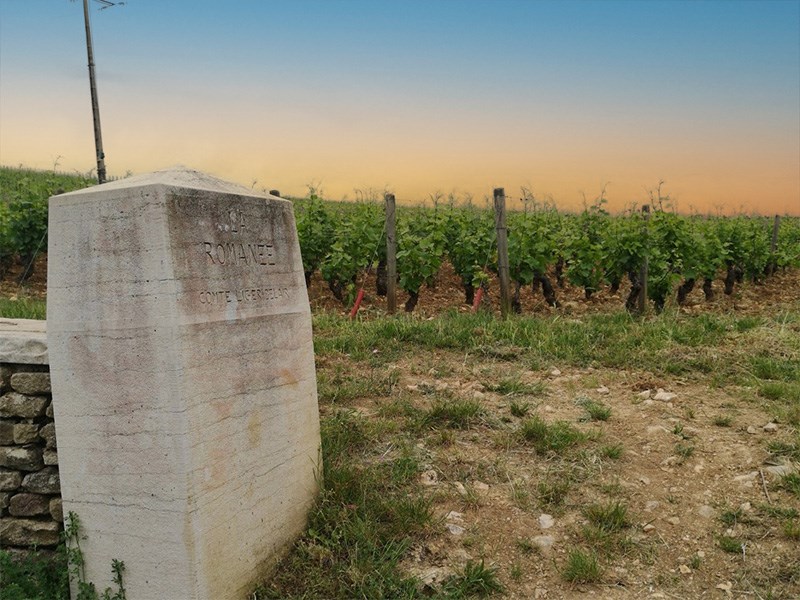 La Romanée - A legendary vineyard located just above Romanée-Conti
La Romanée - A legendary vineyard located just above Romanée-Conti
Premier Cru In Vosne-Romanée
Even a Premier Cru from Vosne-Romanée can give a wine lover chills, just thinking about it. Most of these vineyards are almost on the same slope as the better Grand Cru vineyards. Cros Parantoux is the heart of the story of Henri Jayer, perhaps the most legendary winemaker from Vosne-Romanée. Most of the Premier Cru vineyards in Vosne-Romanée are in close proximity to the Grand Cru vineyards in the commune, allowing great wines to be made from all of them. Below some of most notable are unfolded.
Cros Parantoux
Cros Parantoux is perhaps the best Premier Cru in Burgundy, which can only be attributed to Henri Jayer. Henri Jayer planted Cros Parantoux in the 1960s, but the first vintage he chose to bottle under its name was the legendary 1978. After that, Jayer continued to bottle Cros Parantoux until 2001, which was the last vintage with his name on the label. His nephew Emmanuel Rouget started his first bottlings from his uncle's vines in 1989. Meo-Camuzet had a small shareholding, which he started bottling in 1985 and has done since.
The level of quality is proven year after year when prices are higher than many Grand Cru wines from nearby vineyards.

Les Beaux-Monts
Les Beaux-Monts extends over a relatively large area and is a continuation of Echezeaux. It extends further into the valley and further up the slope. The slightly higher elevation may prove advantageous if the weather continues to get warmer. Les Beaux-Monts, with its Premier Cru classification, does not cost nearly as much as the big Grand Cru vineyards. However, it still offers top-notch experiences - especially in the best vintages.
The most famous wine from Beaux-Monts comes from Domaine Leroy, which with 2.61 hectares is the largest landowner. Both Dujac and Grivot provide excellent wines from Les Beaux-Monts.
Les Suchots
On a map, Les Suchots can be seen as a natural link between the Grand Cru vineyards of Echezeaux and Romanée Saint-Vivant, but from a seed perspective, it is clear how Les Suchots is lower in the valley slope than the other two vineyards. This explains the Premier Cru and not the Grand Cru. The wines do not have the same intensity as their neighbours, but they do have an elegance and length that justifies their place in the hierarchy.
In total, the vineyard measures 13.08 hectares, which are shared between more than 20 owners, so the productions are small but the love great. Domaine Confuron-Cotetidot owns 2.16 hectares and produces a classic wine from here that does best in the slightly warmer years. Small really nice productions come from Arnoux-Lachaux from the top of the vineyard with 0,43 hectares. In addition, both Cathiard and Liger-Belair are highly coveted.
Aux Malconsorts
In direct connection from La Tâche, the slope goes over to Malconsorts, so it is on almost the same soil this vineyard is situated. This helps to underline the quality of the wines from this vineyard. Aux Malconsorts is a superb parcel of 5.86 hectares that produces high quality wines. The other end of the vineyard is adjacent to Aux Boudots in Nuits-Saint-Georges, but Aux Malconsorts stubbornly maintains its Vosne style - far more than reminiscent of the style of Nuits-Saint-Georges.
The top wine from the vineyard comes from Cathiard and his 0.74 hectares, but both Dujac and Hudelot-Noëllat also produce impressive wines from Aux Malconsorts.
Village-Appellation In Vosne-Romanée
With almost 100 hectares in Vosne-Romanée, there are still many parcels that have neither a Premier nor a Grand Cru classification. However, they still produce grapes for wines with classic Vosne character, finesse, richness, and length.
Several of the vineyards are written on the label from the producers, but much is also bottled blended from several vineyards. The quality of these is also usually top notch, underlining the towering standards across the municipality.
Vosne-Romanée In The Bigger Picture
Along the golden slopes of Burgundy, Vosne-Romanée shines brightest. Beautiful wines are made in Gevrey-Chambertin, Musigny can enchant, and the chateau at Clos de Vougeot is famous all over the world, but the quality of the red wines from Vosne-Romanée is what most wine lovers from all over the world are hungry for.
With Romanée-Conti, La Tache and La Romanée in the lead, no commune is stronger. When this is underlined by some of the absolute leading Premier Cru vineyards in the whole region with Aux Malconsorts and Cros Parantoux, there can be no doubt whatsoever. This commune is the leader in Burgundy, and this is reflected in the prices of all wines with Vosne-Romanée on the label.
None of the vineyards here are getting bigger by the square. That means no more bottles are coming from here. As the amount of wealthy wine lovers only grows, there will most likely be an increased demand for the best wines in the world. The wines of Vosne-Romanée will be high on most wish lists, as they provide the best wines from Burgundy.
